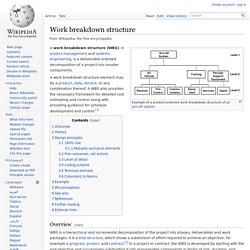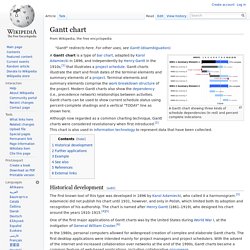

Work Breakdown Structure (WBS) Template. Introduction The Work Breakdown Structure (WBS) is a view into the project which shows what work the project encompasses.

It is a tool which helps to easily communicate the work and processes involved to execute the project. The Project Manager and project team use the WBS to develop the project schedule, resource requirements and costs. There are many ways you can present the WBS for your project; this template provides many of the most popular layouts from which you can choose. Depending on where in the Project Plan you're putting the WBS a different layout may be more suitable for you. Work breakdown structure. Example of a product-oriented work breakdown structure of an aircraft system.

A work breakdown structure (WBS), in project management and systems engineering, is a deliverable-oriented decomposition of a project into smaller components. Overview[edit] WBS is a hierarchical and incremental decomposition of the project into phases, deliverables and work packages. It is a tree structure, which shows a subdivision of effort required to achieve an objective; for example a program, project, and contract.[2] In a project or contract, the WBS is developed by starting with the end objective and successively subdividing it into manageable components in terms of size, duration, and responsibility (e.g., systems, subsystems, components, tasks, subtasks, and work packages) which include all steps necessary to achieve the objective. Example of work breakdown structure applied in a NASA reporting structure.[2]
Gantt chart. A Gantt chart showing three kinds of schedule dependencies (in red) and percent complete indications.

Although now regarded as a common charting technique, Gantt charts were considered revolutionary when first introduced.[2] This chart is also used in information technology to represent data that have been collected. Historical development[edit] The first known tool of this type was developed in 1896 by Karol Adamiecki, who called it a harmonogram.[3] Adamiecki did not publish his chart until 1931, however, and only in Polish, which limited both its adoption and recognition of his authorship. Work breakdown structure user guide. Videocast - Preparing the Work Breakdown Structure (WBS)
Hugtakalykill flashcards.